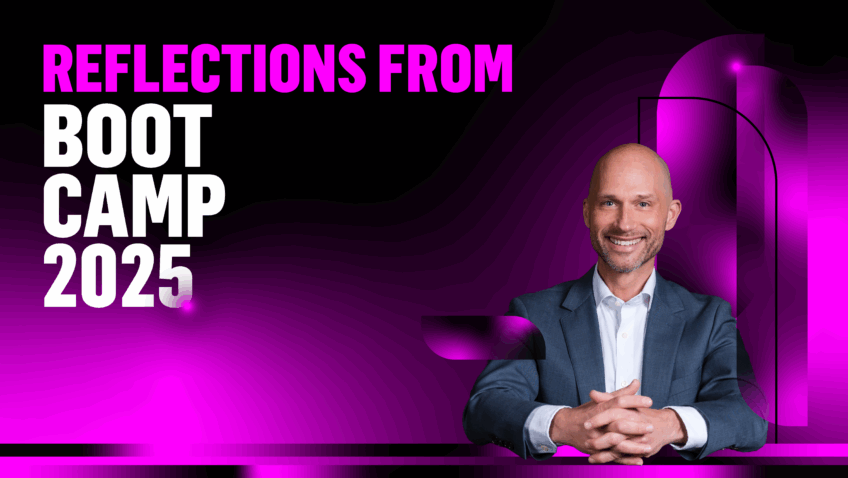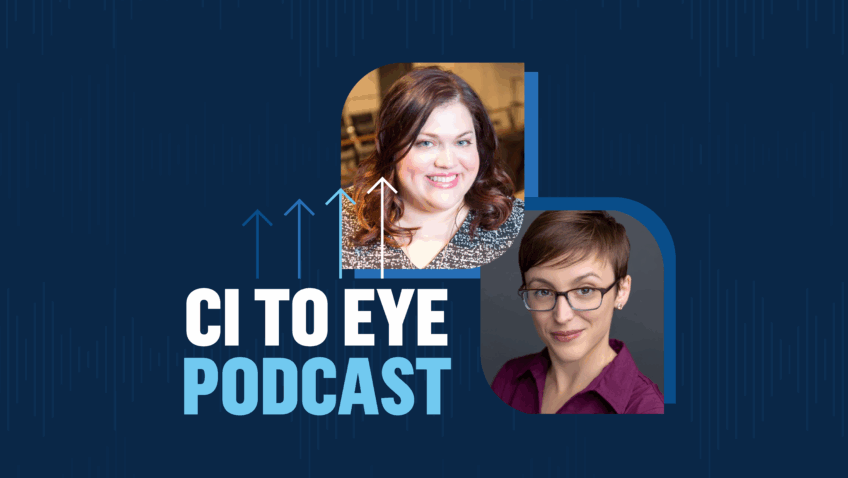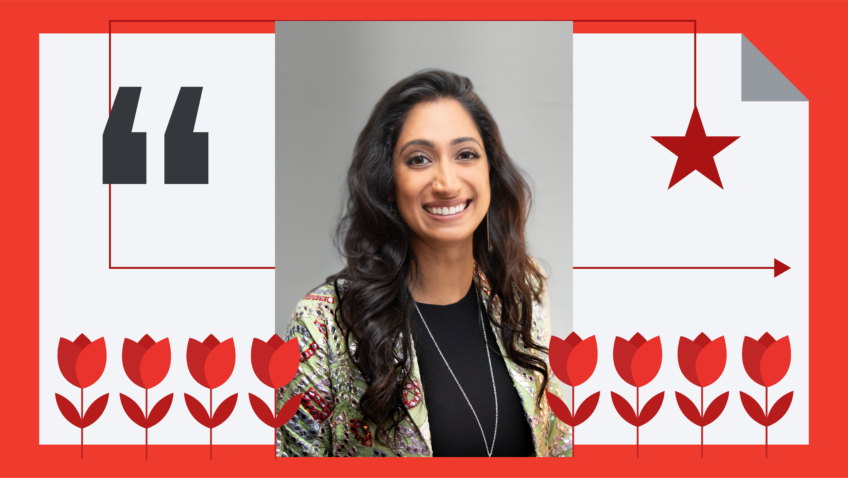The Flywheel: A New Model for Arts Marketing
There is a new marketing model I can’t stop thinking about. It’s called the Flywheel. It’s a new paradigm to model modern marketing that I learned about at the 2018 Inbound Conference from HubSpot’s CEO, Brian Halligan. His presentation outlining the Flywheel is long, but it’s worth watching.
At Capacity Interactive (CI), we continuously talk about tackling marketing challenges for our clients and for our business. In these conversations, we keep going back to the Flywheel to help us analyze and understand what is happening. It’s such a powerful model. The point of this post is to share the model and contextualize it for arts administrators and the challenges they face.
A Trip Down Marketing Funnel Lane
To understand the Flywheel, we must first look at our old friend, the marketing funnel. At CI, we talk about the funnel all the time. It’s a powerful framework to understand attracting, engaging, and converting audiences that most marketers are accustomed to using. We’ve all relied on it for years.
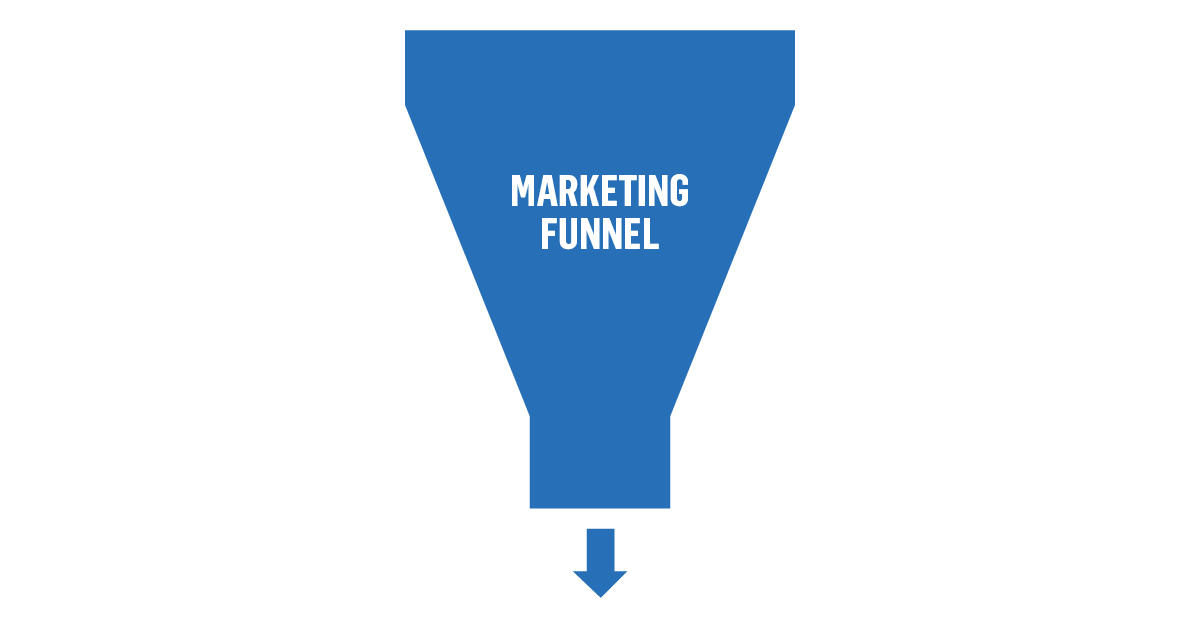
At the Inbound Conference, Brian Halligan laid out his problem with the marketing funnel – the customer is at the bottom, which means they’re an output.
The funnel gives a lot of real estate to attracting new people. Adding new people to the top so they can move through to the bottom. Arts organizations spend a disproportionate amount of time and money attracting new patrons. To quote California Symphony’s Executive Director, Aubrey Bergauer, in her recent CI to Eye podcast episode, “The truth is that arts organizations do not have an acquisition problem. We have a retention problem.”
We know that 90% of first-time buyers don’t come back — a well-documented stat from Oliver Wyman’s “Churn Study” I discussed with Jack Mcauliffe in his CI to Eye podcast episode. The lifetime value of a patron who returns to an arts organization within one year of their first attendance skyrockets when compared to an organization failing to secure that return visit.
So focusing on your current patrons, the ones you already have a relationship with, is more important than ever. Steven Roth, President of JCA Arts Marketing, calls this “shopping from your closet” in his CI to Eye podcast episode. We are so focused on acquiring new audiences, we fail to focus on the ones we already have in our CRM, email list and social networks. Reaching them is far less expensive and far more effective.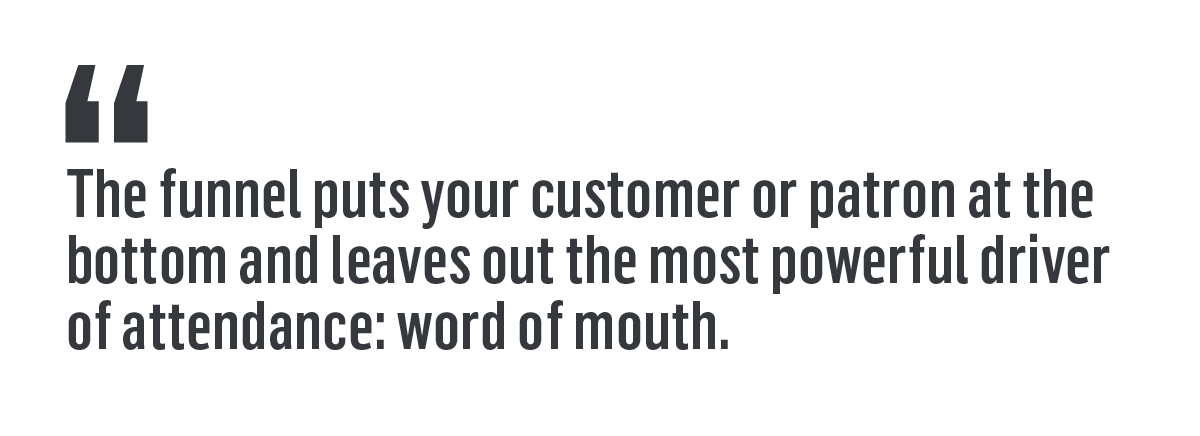 Colleen Dillenschneider, author of the popular website Know Your Own Bone, shared data in her Digital Marketing Boot Camp for the Arts 2017 keynote saying, “What your patrons say about you is 12.8 times more powerful than what you say about yourself.” You can watch that here.
Colleen Dillenschneider, author of the popular website Know Your Own Bone, shared data in her Digital Marketing Boot Camp for the Arts 2017 keynote saying, “What your patrons say about you is 12.8 times more powerful than what you say about yourself.” You can watch that here.
We can scream about how great our new show is but what is really going to convince someone to purchase a ticket is when their friend says it. Hopefully, they say it on social media where a lot of people will see it!
Many arts marketers report that word of mouth is their single best source of referrals. Look back at any patron survey you’ve sent that offers “word of mouth” as a choice. I bet it’s at the top of the list.
With smartphones and social media, people are more connected than ever. Word of mouth can spread faster and easier than ever before with a social post, online review, or text message. The funnel puts your customer or patron at the bottom and leaves out the most powerful driver of attendance: word of mouth. Funnels lose their momentum at the bottom.
What is the Flywheel?
In the past, when I’ve shared a funnel model, I’ve included an arrow back up to account for this.
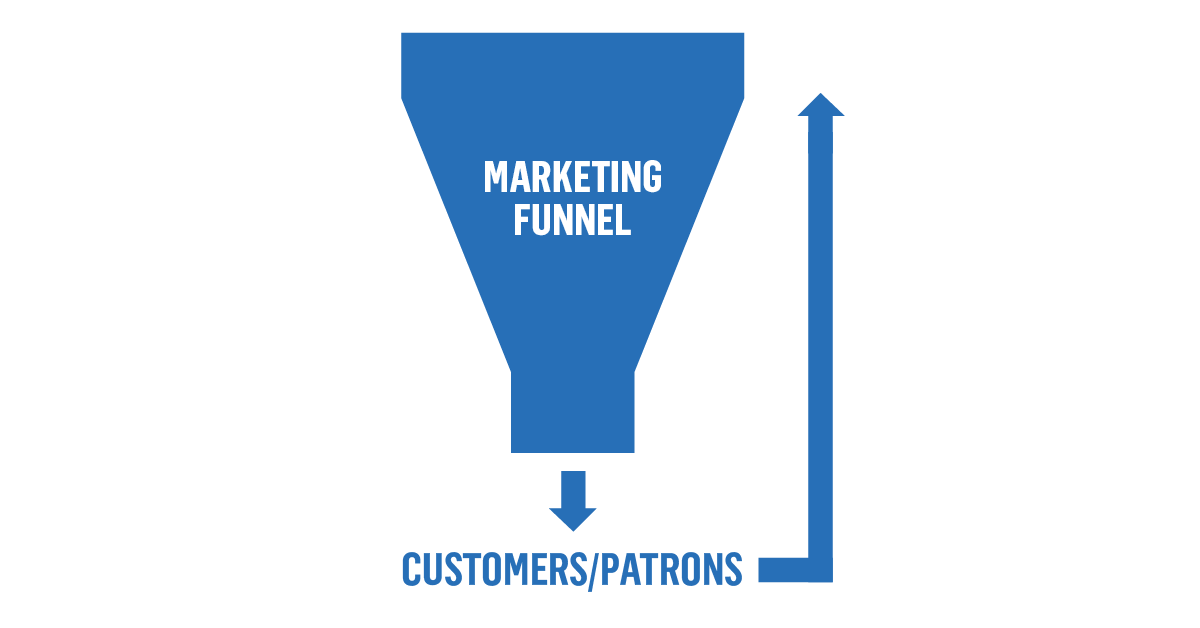 But the Flywheel has an important element baked in.
But the Flywheel has an important element baked in.
The Flywheel is based on the idea that, “Happy customers are your biggest marketing opportunity.” According to HubSpot, “There is one voice that speaks louder than any social post, captures more attention than any ad, and inspires people like no expertly crafted video ever could.”
I think the best example of the Flywheel is a spin bike.
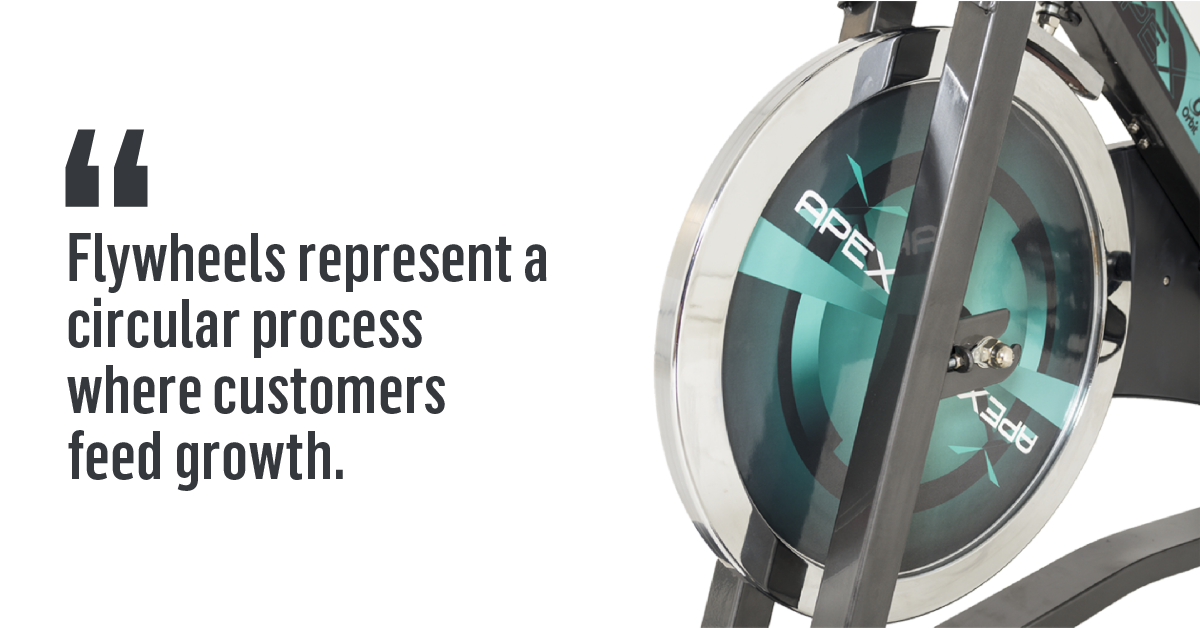
The Flywheel, like on a spin bike, will spin with just a little bit of exertion. Now, imagine if you grabbed the wheel with your fingers and pushed it down. It will keep spinning. It has momentum. “Flywheels represent a circular process where customers feed growth.”
Any friction slows the flywheel.
What is friction? Consider a recent experience I had at a large New York City arts institution. My husband, a friend, and I were subscribers in 2017-2018, and we wanted to renew our subscription for 2018-2019 and add a fourth person to the subscription. Sounds simple, right?
We logged into the organization’s mobile site to do so. I can hear your laughs already. The mobile site was unable to process that transaction because it did not offer the capability. We went to our laptop, logged in and tried again. No dice. So we gave up.
A few days later we received a telemarketing call to renew the subscription, so we asked on the call, “Can we add a fourth person and renew?” The response we got still sends chills down my spine. “No, we can not do that over the phone. You need to write us a letter requesting this change and mail it in.”
The customer or patron lives in the center of the Flywheel model. The smoother the customer experience, the faster it spins.
So based on this experience with this organization, will my word of mouth review be about how much I love that organization’s programming or my absolutely terrible experience? This experience caused friction and slowed the Flywheel.
Spinning with Word-of-Mouth Momentum
The Flywheel model asks, “How can you position your marketing which includes your policies, customer service, website, social media, in-person experience to please your customers and fuel momentum to fire up word of mouth?”There are three sections in the Flywheel model.
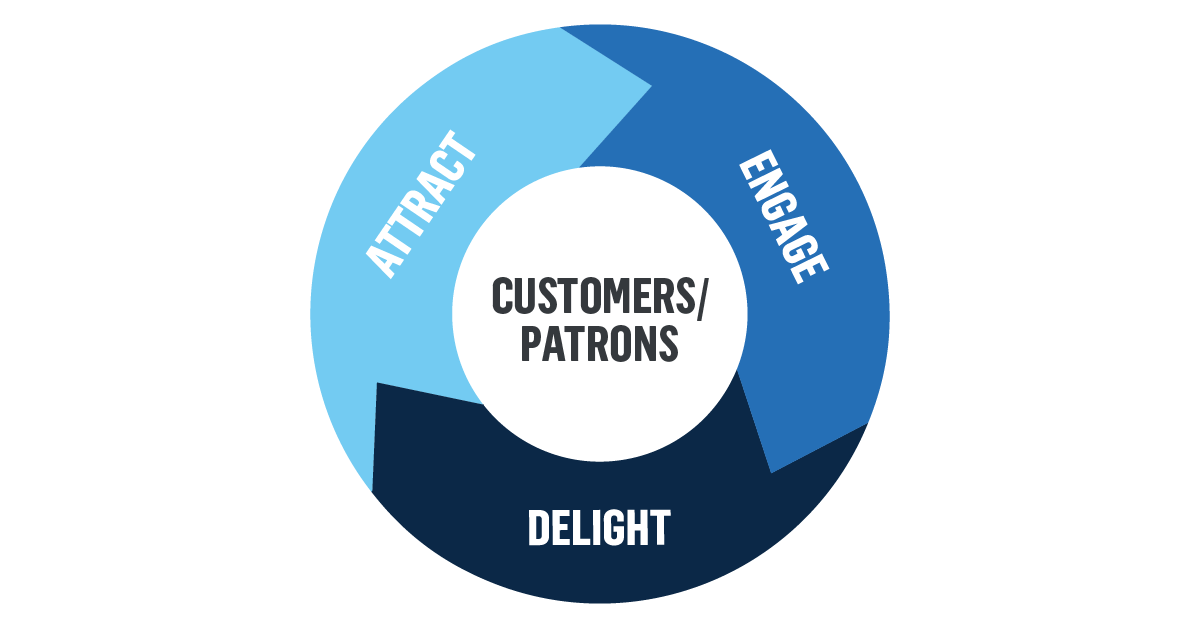
Attract: “Attracting is about creating content and conversations that start meaningful relationships with the right people.” –HubSpot
This is where many arts organizations spend a disproportionate amount of time: investing in bringing new people in. This is your acquisition advertising, your efforts to get critics to write about you, anything that is focused on bringing in new people. Interrupting people in the hopes that someone will be interested is a very top-down, 20th Century way of looking at marketing.
Nowadays you can acquire new audiences using precise digital targeting through display ads, video, and social content. We know from a study of 23,000 live event ticket buyers that digital is relied upon more heavily than print for all age cohorts except those aged 75+.

Engage: “Engaging is about building lasting relationships. How you get people who are interested to come and spend their time and money with you.” –HubSpot
This is everything between attracting patrons, and patrons having an experience with your organization. Engaging is “shopping in your own closet.” Make it easy for users to find your organization on search engines, have a compelling website that draws people in and makes it easy to purchase, a smart email program to speak to those that have opted in, remarket to people who have been to your site, pricing, packaging, etc.
Delight: “Delighting is about providing an outstanding experience and encourages people to become promoters of your organization.”
–HubSpot
This begs you to ask, “How can we be more awesome?” This comes down to the experience. The art on our stages. Our websites. Our patron services. This is where we need to put more emphasis. From a marketing standpoint, this is delivering anticipated, personal, and relevant content – not spamming people. This is content people want to share, this is comfortable seats, kind ushers, short bathroom lines. Making every part of your experience lighter, easier, and more patron friendly.
Creating thumb-stopping social content covers all three areas of the model. Social media can attract, engage, and delight. You may think of social as just a way to attract new people. But I would encourage you to spend more time creating content to engage those already in your Flywheel.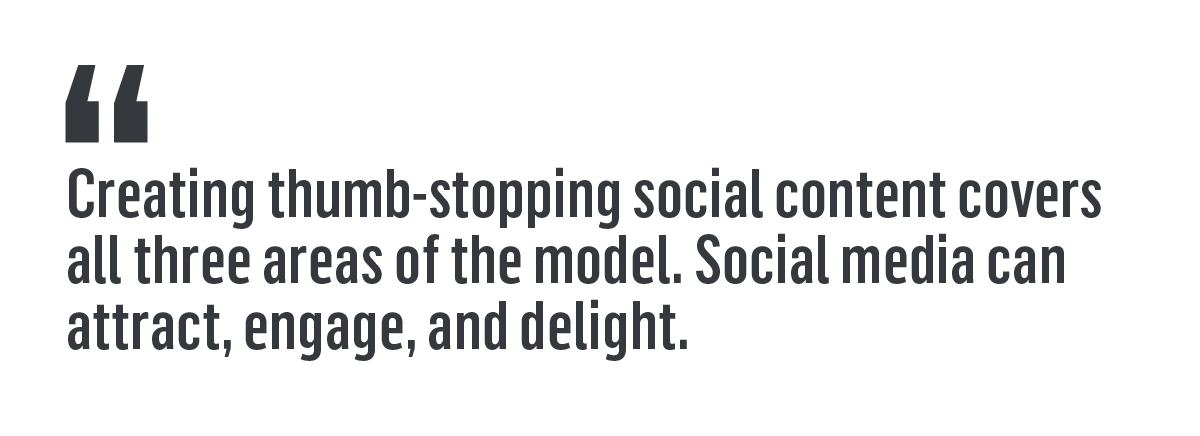 Consider this example. My colleague went to a classical music concert a few years back. It was her first symphony concert, and she absolutely loved it. She loved that the conductor was so dynamic and engaging, and also spoke to the audience about each piece.
Consider this example. My colleague went to a classical music concert a few years back. It was her first symphony concert, and she absolutely loved it. She loved that the conductor was so dynamic and engaging, and also spoke to the audience about each piece.
After the concert, she wanted to share this experience with her social network. She went to the organization’s Facebook Page and searched for some representation of her experience, like an image of the conductor or a video about the concert. But she couldn’t find anything worth sharing.
So, she wrote a text post, and we all know how well only text does on social media. 17 Likes.

The organization’s failure to invest in creating content to help feed word-of-mouth momentum slowed their Flywheel.
Create Opportunities for Word-of-Mouth Evangelism
So what can you as a marketer do with this model? How do you interpret it and apply it?
The speed of your Flywheel is increased by applying more force in the areas where it can have the most significant impact. Are you too focused on “Attract?” How much of that “Attract” money and time can you shift to “Delight?”
This model encourages you to look at your current patrons as the most valuable assets you have. They speed the Flywheel by positive word of mouth.
What can you invest in to encourage word of mouth? Create more share-worthy content. Build features into your website to encourage sharing after a patron purchases. Create in-venue opportunities to evangelize on social. Trigger emails right after a performance with compelling content. Segment and send anticipated, relevant, and personalized messages. You get the idea.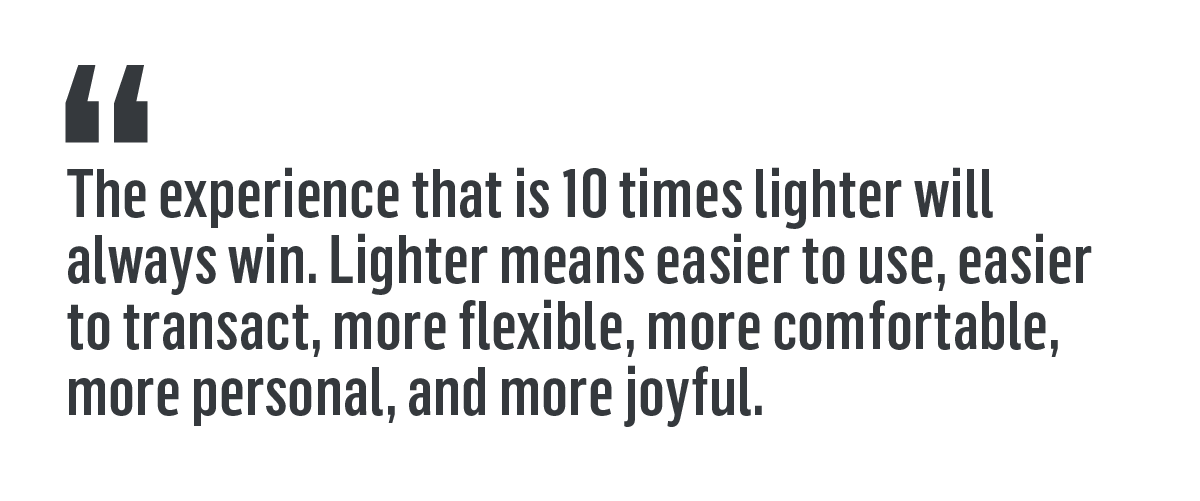 This is about shifting your marketing to become bottom-up from the patron, rather than top down. How do you excite 10 people who will tell 10 people, who will then get excited and tell 10 more people?
This is about shifting your marketing to become bottom-up from the patron, rather than top down. How do you excite 10 people who will tell 10 people, who will then get excited and tell 10 more people?
Brian Halligan, CEO of HubSpot, says he learned in business school years ago that, “The product that is 10 times better will always win.” But now he believes that is no longer true. Now, “The experience that is 10 times lighter will always win.” Lighter means easier to use, easier to transact, more flexible, more comfortable, more personal and more joyful.
The more you think about it and use the Flywheel model the more it will make sense. As you budget and prioritize, I hope you adopt the Flywheel for your organization.


